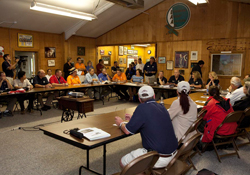 With more light general aviation aircraft being introduced with various engine options, composite airframes, and lightweight digital electronics, it makes little sense to continue certificating them with standards that haven’t been updated for 20 years. That’s why the FAA recently turned to the general aviation industry to evaluate the connection between aircraft certification, operation, and maintenance before it conducts its review of CFR Part 23 (the aircraft certification standard for most GA aircraft), scheduled for Fiscal Year 2010.
With more light general aviation aircraft being introduced with various engine options, composite airframes, and lightweight digital electronics, it makes little sense to continue certificating them with standards that haven’t been updated for 20 years. That’s why the FAA recently turned to the general aviation industry to evaluate the connection between aircraft certification, operation, and maintenance before it conducts its review of CFR Part 23 (the aircraft certification standard for most GA aircraft), scheduled for Fiscal Year 2010.
AOPA, the Experimental Aircraft Association, the General Aviation Manufacturers Association, and the Aircraft Electronics Association, worked with the FAA, the agency’s Small Aircraft Directorate, and other industry officials on the certification process study. Short and long-term recommendations from the study were released July 30 at EAA AirVenture.
“We’ve learned a lot from this process,” said AOPA President Craig Fuller, adding that the study was a “great example” of what can be accomplished when the industry is brought together.
The purpose of the study “was to assess the adequacy of the current airworthiness standards throughout a small airplane’s service life while anticipating future requirements.” (The last review was in 1984.) Participants looked at pilot training, operations, and maintenance to develop a better base for the study.
The group recommended that the certification standards be based on aircraft performance, not engine type and airplane weight as is the current standard, because of the increasing performance and complexity of small GA aircraft.
“While the existing approach has produced safe airplanes for decades, technological advances have changed the original assumptions of the Part 23 divisions,” said Leisha Bell, AOPA director of aircraft and environmental affairs, who participated in the study. “The new engine options, composite airframes, and lightweight digital electronics offer Part 23 airplanes the operational capability and performance of traditionally larger transport airplanes.”
The study also recommends rewriting Part 23 as a “top-level regulation with more detailed implementation methods defined by reference to industry and government standards.
Because of the long service life of GA aircraft, continued airworthiness is a another area the group studied. The group recommended that the FAA consider the degradation of aircraft, parts, and systems in Part 23; allow industry and government standards to be used for modifying or altering aircraft certified under CAR 3; and improve the usability of technical documents.
The group’s points concerning aging aircraft mirrors AOPA’s position that a one-size-fits-all approach to continued airworthiness isn’t appropriate. Factors such as an aircraft’s type of operation and accident history should be taken into account when considering an airworthiness directive or other mandatory measure.
AOPA chaired the study’s pilot interface working group that discussed flight testing, operation, and pilot training, and found a disconnect between aircraft certification and operation. Because of those findings, the group suggested more emphasis on pilot understanding of V speeds and the protection actually given at those speeds; more simulator training on landing on minimum-length runways when a type certificate is required; and more training on recognizing the difference between a stall warning and an actual stall as well as recovery from a full stall.
“These recommendations create a broad base for the FAA as is begins reviewing Part 23 regulations in Fiscal Year 2010,” said Bell. “AOPA and the Air Safety Foundation will continue to actively work with the FAA and other aviation associations on this much-needed update.”


